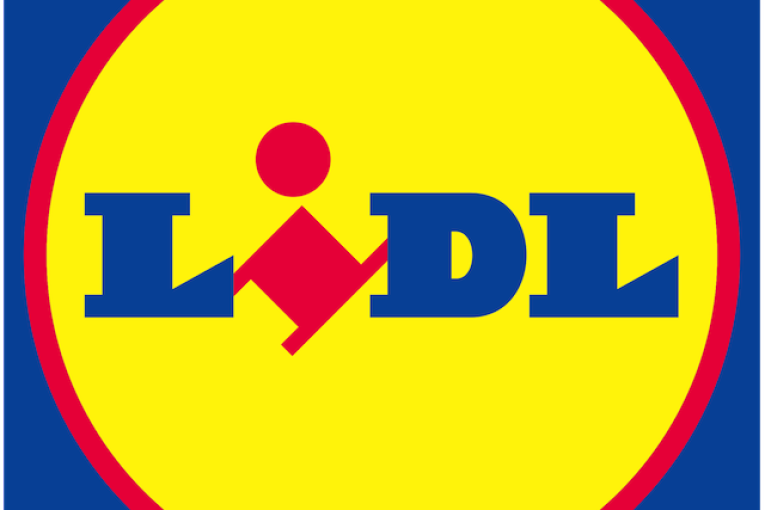Lidl Could Be Coming To Texas, So Here’s What You Need To Know

Lidl has established its U.S. headquarters in Arlington, Virginia, and it is building warehouses in Maryland, North Carolina and Virginia. The new-to-the-U.S. retailer has said it will begin opening stores in 2018, but it is possible some could debut in late 2017. Lidl has about 80 store locations (some say as many as 150) picked out along the Eastern Seaboard, from Pennsylvania down to Georgia.
But Lidl also has shown interest in Texas, according to Doug Koontz, head of content for RetailNet Group, a retail research and advisory practice. Koontz introduced members of the Colorado-based Global Market Development Center (GMDC) to Germany-based Lidl during a live lunch-hour webinar in December. Koontz focused mostly on Lidl, but Aldi, another German-owned retailer, got some play as well.
Lidl’s parent company, Schwarz Gruppe, is of similar scale to Aldi, which has more than 10,000 stores globally. But Schwarz Gruppe also operates hypermarket stores under the Kaufland banner.
Both Aldi and Schwarz Gruppe have long track records of entering and winning in the markets they pursue.

“We don’t expect anything different in the U.S.,” Koontz said. “Frankly, there really are no notable failure stories to tell. They each have a great track record and proven credibility.”
The GMDC webinar covered what has made Aldi and Lidl successful in other markets and how other retailers and brands have responded.
Aldi has been in the U.S. for close to 40 years. When it moves into a new market, it works to understand the consumer and competitive dynamics before it opens a few stores. It has the expertise to then escalate growth quickly.
“As we’ve seen the rise in Aldi in the U.S. market throughout regions of Florida and tearing away at market share from localized retailers, they appear to be winning the war in small format,” said Mark Mechelse, GMDC director of insights and communications. “And it’s causing concern with others in the food channel. With more than 1,400 stores and aspiring to grow to over 2,000 in the near future, Aldi certainly packs a punch when it comes to profitability.”
Aldi and Lidl are both limited assortment grocery players with an “ultra low-cost model,” Koontz said. Simplicity is paramount. Standardized stores are designed for efficiency first. Their stores employ very few people. Dump bins and shelf-ready packaging mean there is less to do.
Private label also is an important part of both retailers’ business plans. More than 95 percent of the 800 to 1,000 products in an Aldi store is private label. With Lidl, it’s about 70 percent across its 1,500 to 2,000 SKUs.
Scale plays a huge factor in their success as well, with store expansion the primary growth driver for both retailers.
Koontz described Lidl as a “little more cutting edge” than Aldi, closer to a Trader Joe’s (which is owned by Aldi Nord) with its affordable, higher-quality products and “interesting assortments” that reinforce the foodie culture proposition.
Aldi and Lidl have been differentiating themselves in key areas. Both understand their customers and offer regional or local products to appeal to them. Both lead in the health & wellness space. In fact, Aldi and Lidl were among the first to offer non-GMO and vegan products. Both have begun to integrate beer and wine in a “slightly more premium way.” Their store brands are well known. Lidl’s Deluxe brand is led by Michelin Star Chef Kevin Love. High-quality general merchandise drives traffic for both retailers with a treasure hunt, limited-time offering approach.
Both Aldi and Lidl are evolving, and that is key.
“They understand that they need to change, and that’s what really makes this so powerful,” Koontz said. “They’re picking and choosing where to differentiate themselves while also still being true to that low-cost model. It ensures that they are not only top of mind because you can buy the cheapest basket, but also because you can get some really quality products.”
Aldi in the U.S.—and in Texas, Koontz recalled—has been found to have a basket with prices 25 or 30 percent below even Walmart’s offerings in comparable products, but its shoppers aren’t all Walmart converts. Lidl’s won’t be either.
“They are not viewed over time as retailers purely for low-income consumers,” Koontz said. “There is a lot of middle class and even more aspirational shopper adoption as consumers get comfortable with the format.”
Aldi is opening about 50 stores this year. The stores have evolved, with wider aisles and cleaner merchandising. The wine selection is better, and Aldi has a range of organic offerings. It is pushing the boundaries of a traditional discounter.
The private label products that both Aldi and Lidl offer look very similar to national brands. Consumers begin to trust them and don’t mind “trading down” to the cheaper version.
“One of the clear takeaways is that the store is the brand. Aldi is the brand. Lidl is the brand, and all the national brands, that work with them, tend to be bonuses,” Koontz said.
Both retailers are becoming more active online. Lidl has run promotions that will result in lower prices for a week on a product if enough people tweet and retweet about it. Both are likely to ramp up online ordering. These are retailers with a simple format, but also the ability to adopt trends.
“They’re going to launch, modify and scale quickly, but it is a model of consistency,” Koontz said. “You know roughly what to expect, though they do have a willingness to adapt. But you can count on what their stores will look like, roughly 95 percent of what the merchandise will include and a lot of the appeal that they will have with their customers, and that is centered around price being core. They have the lowest price in the market, no ifs, ands or buts about it.”
What Lidl’s entrance into the U.S. will look like
Lidl may open as many as 20 stores in 2017, but there obviously will be significantly more openings in 2018, and aggressive pricing will be part of the package.
“We feel really strongly about this because they need to establish themselves in an already saturated marketplace,” Koontz said. “And it’s going to cause others to chase where Lidl and Aldi already sit.”
He expects that Lidl, with more national brands than Aldi, will be more likely to compete with traditional grocery stores and bring immediate market pressure.
“There’s not a lot of new consumers,” he said. “We probably already have too many stores if we’re really being hard on ourselves and the industry, so the weak and the vulnerable players will immediately feel the pressure on price, plus the scale, plus as they erode and steal certain parts of the basket early on and begin to transition people to do more of their full-time shopping at Aldi and Lidl.”
As Lidl is gearing up for its U.S. expansion, it is sourcing talent not only from Europe, but also from U.S. retailers such as Target, Family Dollar and Nordstrom.
With sites set to accommodate stores about 36,000 s.f. in size, Lidl locations could be three times larger than the Aldis some have seen in their markets. The sites it has selected are in high-traffic, densely populated areas.
Lidl may bring its “store of the future” to the U.S. It has been testing the concept in the U.K., Koontz said. These stores offer a more “aspirational experience, more foodservice…it’s more of a high-end approach, but, again, still price competitive,” he said. “Because they do have this 36,000 s.f. to fill, they’re going to use space in ways that they haven’t before.”
That extra space possibly could be used for click and collect, though Koontz had no confirmation on that.
“They’re not building just a 10,000-s.f. box, but something that they can really grow into and evolve throughout the future.”